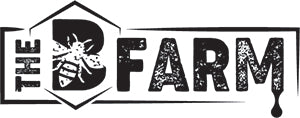As a beekeeper, you should be monitoring your colony for mites at least once each month during the bee season. However, you might want to check a bit more frequently in the late summer when the risk for mites is highest. Unfortunately, people often notice many visible signs of Varroa mites too late to save a colony. But you can prevent permanent damage when you’re aware of these signs that Varroa mites are present in your colony.
You Find Phoretic Mites
Phoretic mites are Varroa mites that attach themselves to the abdomens of adult worker bees. More specifically, mites tuck themselves between the sclerites of the bees’ abdomens to feed off them. As a result, many beekeepers claim they never see mites when they check. Be sure to inspect several bees for mites thoroughly and treat them accordingly if you find any.
High Percentage of Mites to Bees
When you do your regular monitoring, you should count and keep track of how many mites you find in each hive. Take the number of mites you find and divide it by the approximate number of bees in the hive. Then, multiply that number by 100 to get the percentage of mites to bees. If the result is around two to three percent, it’s cause for concern, and you should start treatment for your colony.
Noticeably Chewed Down Brood
Your bees can sense a Varroa mite presence in the brood. As a result, they’ll uncap their brood and chew it down to keep things clean and tidy. If you notice your colony is chewing down its brood at an aggressive rate, something is most likely wrong. In fact, you may have high mite levels that need your attention.
Being aware of the signs that Varroa mites are present in your colony can save your colony from an untimely collapse. Regularly inspecting your bees and the hive is the best way to combat full-blown Varroa Mite Syndrome (VMS). You can also visit The B Farm online for mite-resistant bees for sale. Varroa-resistant bees can help you maintain a strong and healthy colony.
